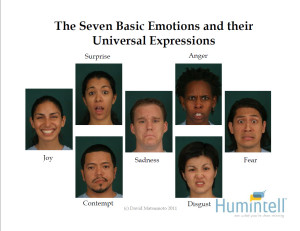When times are tough, finding things to be grateful for can be difficult.
We are extremely grateful for your support. You have inspired and motivated us to be better, which helped us make it through the year.
Thank you!
We wish you and your loved ones a wonderful holiday season. Happy Holidays!
![]()
David Matsumoto and the entire Humintell team
Please enjoy this selection of our most popular blog posts from 2020:
 Body Language Decoded: Brought to you by CBC
Body Language Decoded: Brought to you by CBC
Take a journey deep inside the intriguing world of non-verbal communication. As human beings, our bodies communicate our inner emotions and feelings in ways that can often be easily seen by others, but at other times, are barely visible.
So you want to know about body language?
Body language is also known by another term called Nonverbal Behavior.
Nonverbal behavior is a complex signal system of the body to communicate our mental states, thoughts and feelings.

How to Read Facial Expressions of Emotion when People are Wearing Masks
How can we identify indicators of the face, both veracity and deceptive, even when people are wearing masks?
It is true that when people wear masks, the amount of visual cues that we have (the observable surface of the face) is greatly reduced.
But not all masks are created equal.

Addressing Arguments Against Facial Expressions of Emotion
Within the past few months, many people have reached out to Humintell and asked us to comment on recent research articles that argue against facial expressions of emotion.
After a lot of deliberation, Director Dr. David Matsumoto addresses those issues.
The post What a Year 2020 has been! first appeared on Humintell.

 Guest Blog by AnnMarie Baines
Guest Blog by AnnMarie Baines